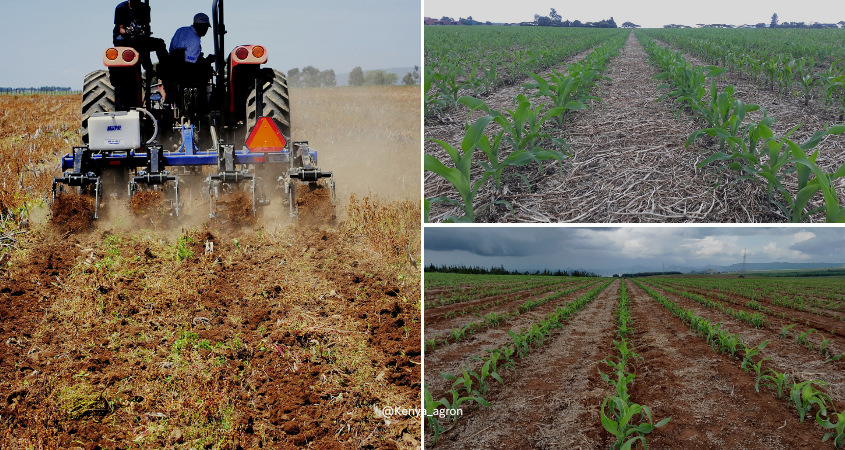
The success of maize cultivation hinges on a series of land preparation practices that encompass timing, planting techniques, seed germination, and the judicious use of fertilizers and soil amendments. In this discussion, let’s unravel the intricacies of these best practices, highlighting their pivotal role in establishing the foundation for a thriving maize crop.
Timing is critical in maize land preparation. Starting the process well in advance of the planting season ensures that the land is adequately prepared for successful maize cultivation. Clearing the land of existing weeds, and debris provides a clean slate for the crop. Proper timing also provides the necessary space for addressing soil issues, such as pH adjustment and organic matter enrichment.
Plant maize seeds at a uniform depth, typically around 2 inches, to ensure consistent germination. Pay attention to seed spacing between rows to avoid overcrowding, which can lead to resource competition and reduced yields. Utilize planting equipment that guarantees even seed placement and spacing. Align planting with local climate and rainfall patterns, ensuring that the soil is adequately moist for successful germination.
Maize seed germination is a crucial phase that significantly influences crop yields. It’s essential to create favorable conditions for germination by preparing a well-structured soil with sufficient oxygen. Factors such as cloddy seed beds, uneven planting depth, and variable soil moisture and temperature can impact germination. Uneven germination can lead to yield losses, emphasizing the importance of precision in this phase.
Fertilizers play a pivotal role in maize cultivation, but their application requires careful consideration. Soil testing guides the determination of the right type and amount of fertilizers to meet crop needs. Timing and application methods are critical to maximize effectiveness. The use of organic and synthetic fertilizers should align with soil analysis recommendations. Proper use of lime for soil pH adjustment enhances nutrient availability, contributing to healthier maize crops.
Overall, these practices underscore the interconnected nature of maize land preparation. From the timing of initial ground clearing to the precision in planting and the meticulous use of fertilizers, each step contributes to the overall success of maize cultivation. Adopting these practices ensures that the soil is primed for optimal maize growth, leading to increased yields and sustainable agricultural practices.
Grow more with less
#savesoil #soilhealth #soilscience
Order our services and get to know how to improve your soil for better yeilds.